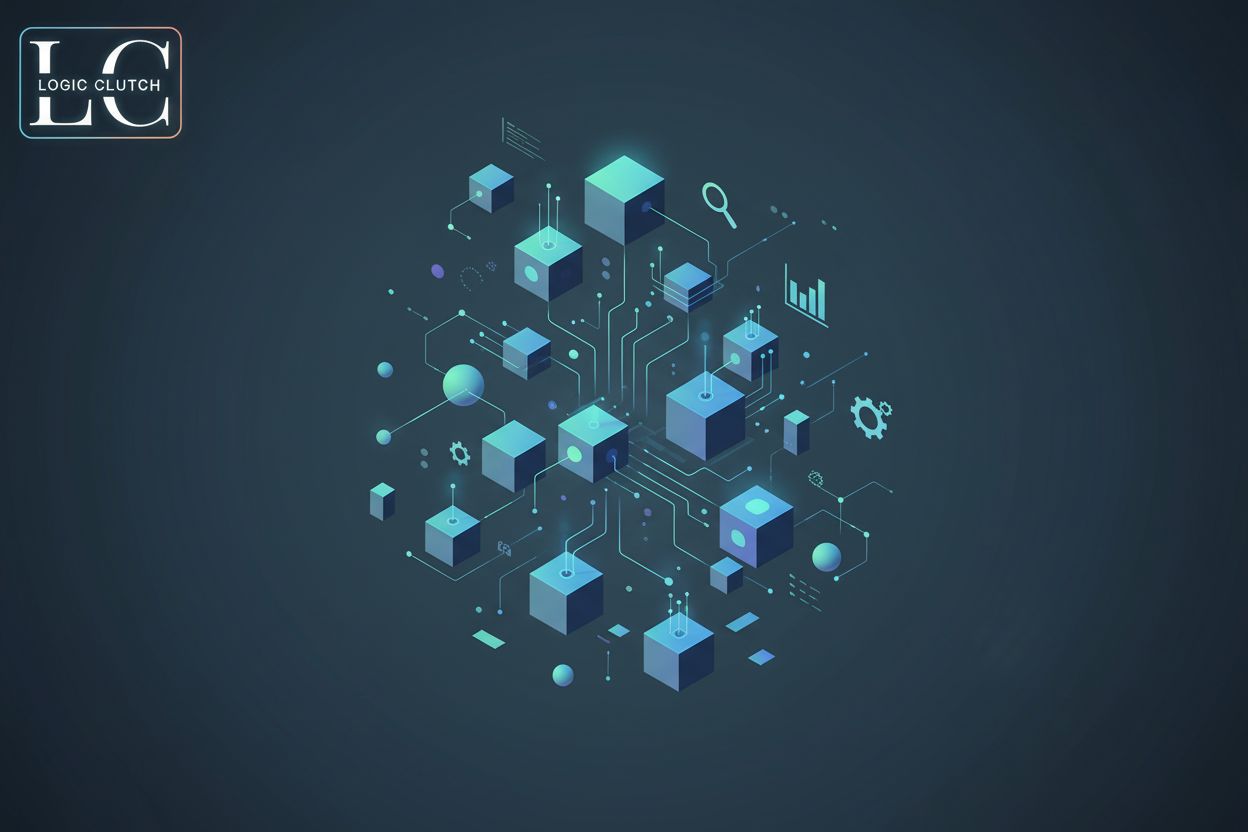How Effective AI Strategies Empower Enterprise Growth

TL;DR
The Untapped Potential of AI in Enterprise Growth
Okay, so, ai in the enterprise. It's kinda like that new exercise gadget you bought – promising, but sitting in the corner collecting dust, right?
A lot of companies are stuck in the pilot phase with ai projects. They've got these cool little demos, but they can't seem to scale them up and make them, you know, actually useful across the whole company. According to The 80/20 Rule of Enterprise AI, enterprise ai isn’t something you simply deploy; it’s a reimagination of how work happens. This means focusing on the 20% of AI initiatives that deliver 80% of the value, often by automating repetitive tasks or providing predictive insights, rather than trying to implement AI everywhere at once. The core principle is about identifying high-impact areas and ensuring those AI solutions are deeply integrated into existing workflows, not just standalone experiments.
Pilot Project Problems: So many enterprises struggle moving past those initial "proof of concept" ai projects. It's like, they build a chatbot that can answer basic questions, but then what? It don't get integrated into the core business processes, and it just kinda fizzles out. A common pitfall is building a technically sound AI model that doesn't address a real business need or isn't designed for user adoption. For example, a company might develop an AI for document analysis that's highly accurate but requires a complex manual upload process, making it impractical for daily use.
Strategic Alignment is Key: It's not just about throwing ai at a problem and hoping it sticks. It's about really thinking about how ai can help you reach your business goals. It's about shifting from experimental ai to strategically aligned initiatives. This involves clearly defining what success looks like for AI – whether it's increasing customer retention by 15%, reducing operational costs by 10%, or improving product development cycles. AI initiatives should directly support these measurable business outcomes.
Reshaping Workflows, not just Tech: ai isn't just some shiny new tech toy. It's about changing how people work, how decisions are made, and how the whole company operates. AI Workforce Enablement, according to Logic20/20, bridges the gap between technology and adoption, empowering teams to use ai confidently, responsibly, and at scale. This means not only providing training on AI tools but also fostering a culture that embraces AI as a collaborative partner, understanding its capabilities and limitations, and adapting roles and responsibilities to leverage AI effectively.
Salesforce has been doing some pretty cool stuff with ai, especially with einstein ai. and I am sure you already know this.
Leveraging Einstein AI: einstein ai can be a game-changer for enterprise growth. It can help with everything from predicting sales to personalizing customer experiences. Einstein AI offers a suite of tools that can be embedded directly into Salesforce workflows, such as Einstein Prediction Builder for custom predictions, Einstein Bots for automated customer service, and Einstein Analytics for data insights. These tools are designed to work with your existing Salesforce data, making AI accessible without extensive custom development.
Enhanced Customer Experiences: Imagine being able to anticipate what your customers need before they even ask for it. That's the power of integrating ai into your crm processes. For instance, Einstein can analyze customer interaction history and predict their next likely need, allowing sales or service teams to proactively offer solutions, improving satisfaction and loyalty.
Boosting Sales & Service: ai can seriously improve sales forecasting, lead generation, and even customer service within Salesforce. Think smarter leads, faster resolutions, and happier customers. Einstein can identify high-potential leads based on engagement patterns, suggest next best actions for sales reps, and automate routine service inquiries, freeing up human agents for more complex issues.
Getting ai to work for you is more than a tech upgrade; its a shift in mindset. To truly harness AI's potential, it's crucial to ensure that these powerful tools are seamlessly integrated into your existing Salesforce environment. This integration is where the magic truly happens, transforming theoretical capabilities into tangible business improvements.
Aligning AI Strategies with Key Business Outcomes
Alright, so you’ve got all this ai stuff, but how do you make sure it's actually, you know, helping? It's all about aligning your ai strategy with what you're actually trying to achieve as a business – simple as that!
- Process Intelligence is Key: You can't fix what you can't see. Process intelligence is all about getting crystal clear on how your business really works. Platforms like apromore from salesforce can hook into your existing systems (like erp, crm, and such) and show you the real end-to-end processes. Without that visibility, you're just guessing where ai can make the biggest impact. A P More, a process mining and intelligence platform from Salesforce, analyzes event logs from your IT systems to visualize, analyze, and optimize business processes. It helps identify bottlenecks, deviations from standard procedures, and areas of inefficiency, providing the foundational understanding needed to strategically apply AI for maximum impact.
- Find the Right Opportunities: Once you understand your processes, you can pinpoint the areas that are ripe for ai. Think about places where things get bogged down, where there's a lot of wasted effort, or where compliance is a headache. That's where ai can really shine. For example, in healthcare, ai could automate appointment scheduling to reduce no-shows, or in retail, ai could predict inventory needs to minimize waste. Identifying these opportunities requires a deep understanding of both business operations and AI capabilities.
Investing in ai without knowing what's gonna happen is like throwing money into a black hole, right? That's where simulation comes in.
Test Before You Invest: Tools like salesforce copilot let you simulate ai-driven scenarios before you actually deploy them. You can play "what if" and see how ai will affect things like costs, throughput, and resource utilization. Salesforce Copilot, in this context, refers to AI-powered assistance and simulation capabilities within Salesforce that allow users to model the impact of AI-driven changes. This could involve simulating how a new AI-powered sales forecasting model might affect revenue projections or how an AI-driven customer service automation might impact agent workload.
De-risk Your Investments: Simulation helps you avoid costly mistakes. Instead of rolling out an ai system and hoping for the best, you can test it in a safe environment and forecast the results. This is especially important in industries like finance, where even small errors can have big consequences. By simulating different scenarios, businesses can identify potential issues, optimize AI parameters, and ensure that the deployed AI aligns with desired business outcomes before committing significant resources.
As marlon dumas, chief product officer at apromore from salesforce, puts it, "enterprise ai isn’t something you simply deploy. it’s a reimagination of how work happens." So remember, align your ai strategies with key business outcomes.
With a clear strategy in place and the ability to de-risk investments through simulation, the next critical step is ensuring your workforce is ready to embrace and leverage these AI advancements.
AI Workforce Enablement: Bridging the Gap Between Technology and Adoption
Okay, so, you've got all this ai tech, but is your team ready to actually use it? 'Cause that's where a lot of companies are dropping the ball, honestly. It's not just about having the coolest algorithms; it's about making sure your people can work with 'em.
AI Literacy is Key: You gotta start with the basics. Employees need to understand what ai is, what it can do, and—just as important—what it can't do. Think of it like this: you wouldn't hand someone a scalpel without teaching them basic anatomy first, right? For instance, in finance, staff should know how ai algorithms are being used for fraud detection and its limitations. This foundational understanding helps build trust and reduces fear of the unknown.
Fluency Matters Too: It's not enough to just know about ai; people need to be able to use it. This means hands-on training with the specific ai tools your company is using. So, in retail, train your staff on how to interpret ai-driven sales forecasts to optimize inventory, or in healthcare, how ai can help in preliminary diagnosis. Practical, role-specific training ensures that employees can effectively integrate AI into their daily tasks.
Culture Eats Strategy for Breakfast: ai can be scary for some people. They might worry about their jobs, or just not understand how it fits into their workflow. You gotta create a culture where people feel comfortable experimenting with ai and asking questions. This involves open communication from leadership, celebrating early AI wins, and providing safe spaces for employees to learn and adapt.
One way to boost workforce ai enablement is through "champions networks," where some staff are given extra training and support so they can become internal advocates and mentors for others. Establishing these networks involves identifying enthusiastic individuals, providing them with advanced training and resources, and empowering them to share their knowledge and best practices within their teams. Their role is to demystify AI, provide peer support, and gather feedback to inform further AI adoption strategies.
As mentioned earlier, ai workforce enablement, bridges the gap between technology and adoption, empowering teams to use ai confidently, responsibly, and at scale.
With a skilled and confident workforce ready to embrace AI, the next crucial element is ensuring that AI has the high-quality fuel it needs to perform: data.
Data Intelligence: Fueling AI with the Right Information
You know, ai is only as good as the data you feed it. Garbage in, garbage out, right? So, getting your data ducks in a row is step one, two, and three for any successful ai strategy.
Data Quality is King (and Queen): It's not just about having data; it's about having good data. Think clean, consistent, and complete. For example, in finance, if your customer data has inconsistent address formats (is it "St", "Street" or "str."?), your ai fraud detection system is gonna have a tough time spotting real patterns. This means investing in data cleansing, validation, and standardization processes.
Governance, Governance, Governance: You need rules, people! Data governance policies ensure that data is handled properly, ethically, and in compliance with regulations. This is especially critical in healthcare, where patient data privacy is paramount. Good governance includes defining data ownership, establishing access controls, and creating clear guidelines for data usage and retention.
Integration is the Name of the Game: Your ai models need access to all the relevant data, not just the stuff sitting in one silo. That means integrating data from different sources – crm, erp, legacy systems, you name it. For instance, combining sales data with marketing campaign data and customer support logs can provide a 360-degree view of the customer, enabling more accurate AI-driven predictions and personalization.
Think of your data as the foundation of a skyscraper; if it's wobbly, the whole thing comes crashing down.
Salesforce data can be a goldmine for ai-driven insights. Imagine using ai to analyze your sales data to predict which deals are most likely to close, or using service data to identify customers who are at risk of churning. The possibilities are actually endless. For example, analyzing customer interaction logs within Salesforce can reveal patterns in customer sentiment, allowing for proactive service interventions. Product usage data can inform AI-driven recommendations for upselling or cross-selling. Marketing campaign results, when linked to sales outcomes in Salesforce, can help AI optimize future campaign targeting and spend.
With robust data in place, the next challenge is navigating the practicalities and potential pitfalls of AI implementation.
Overcoming Common Challenges in AI Implementation
Okay, so, you've built this awesome ai system... but nobody's using it. What gives? Turns out, rolling out ai isn't just about the tech; it's about getting folks on board, and making sure you're dotting your i's and crossing your t's with data privacy.
Privacy First, Always: With regulations like gdpr and ccpa, you can't just hoover up data and let ai run wild. You need solid data governance in place. What kind of governance? It's about establishing clear policies for data collection, storage, usage, and deletion, ensuring compliance with privacy laws. In healthcare, this might mean extra layers of anonymization and consent tracking for patient data used in AI models, ensuring that individual privacy is protected while still allowing for valuable insights to be derived.
Transparency is non-negotiable: Black box ai? No thanks. People needs to know why the ai is making certain decisions. Is it explainable? Like, if an ai denies someone a loan, they have a right to know why. This involves using AI models that can provide clear justifications for their outputs, allowing for audits, debugging, and building user trust. Techniques like feature importance or LIME (Local Interpretable Model-agnostic Explanations) can help make AI decisions more understandable.
ethical frameworks are essential: ai can perpetuate biases if you're not careful. So, retail companies gotta watch out that their ai-powered marketing campaigns aren't unfairly targeting specific demographics... or excluding them! This requires careful data selection, bias detection in AI models, and ongoing monitoring to ensure fairness and equity across all user groups.
It’s also important to measure ai performance. Are your kpis tracking improvements in efficiency, customer satisfaction, and cost reduction? If not, how do you know it's working? For example, you should be tracking metrics like:
* Efficiency: Reduction in average handling time for customer service inquiries, increase in lead conversion rates, or decrease in manual data entry time.
* Customer Satisfaction: Net Promoter Score (NPS) improvements, reduction in customer churn rate, or increase in customer engagement metrics.
* Cost Reduction: Decrease in operational expenses related to specific processes, reduction in waste, or optimized resource allocation.
Don't forget constant monitoring! 'Cause ai models can drift over time as data changes. Retraining and tweaking is just part of the game.
Honestly? Implementing ai is a marathon, not a sprint. Tackle data privacy head-on, keep things transparent, and never stop measuring.









